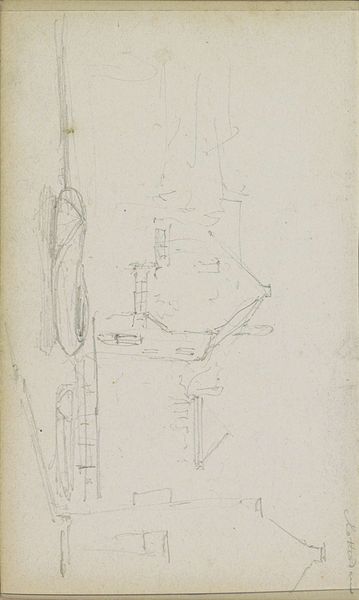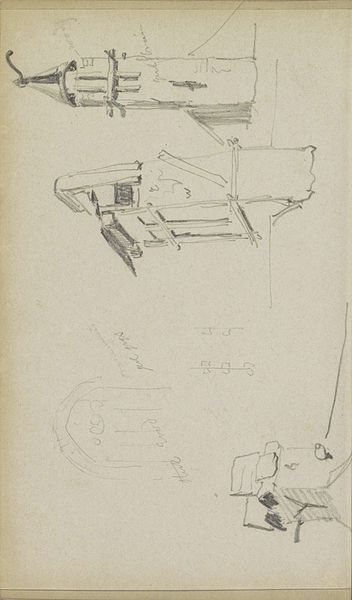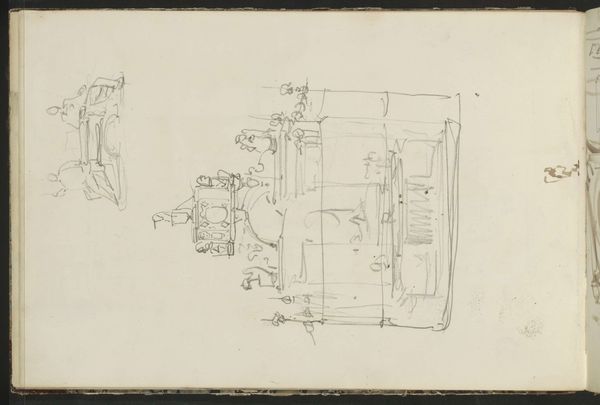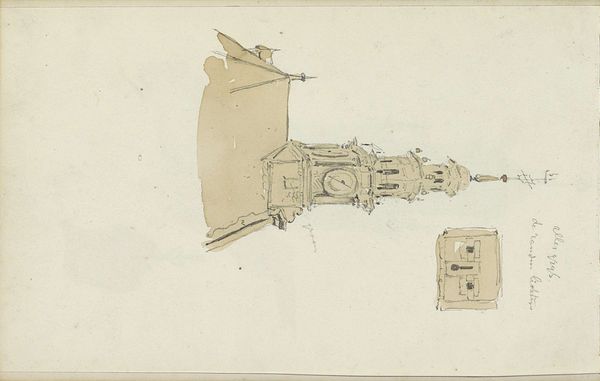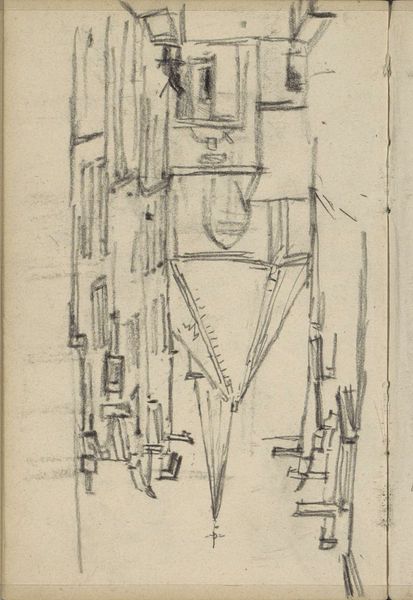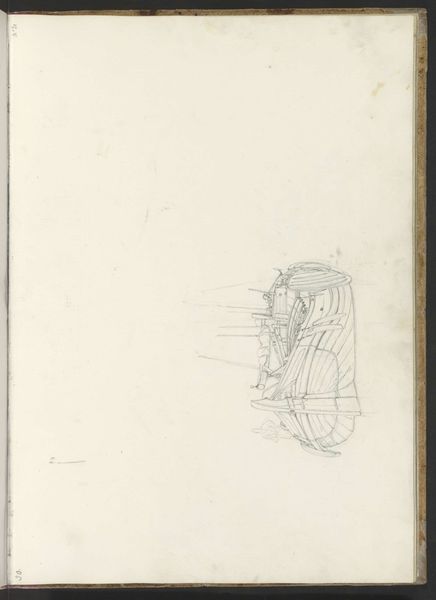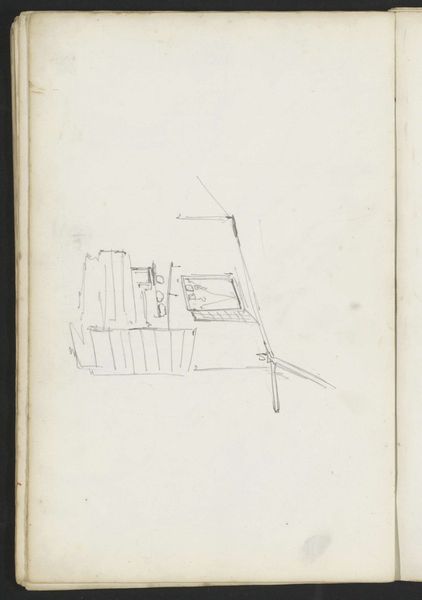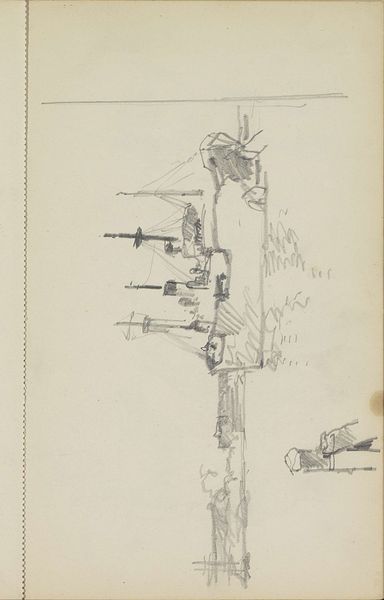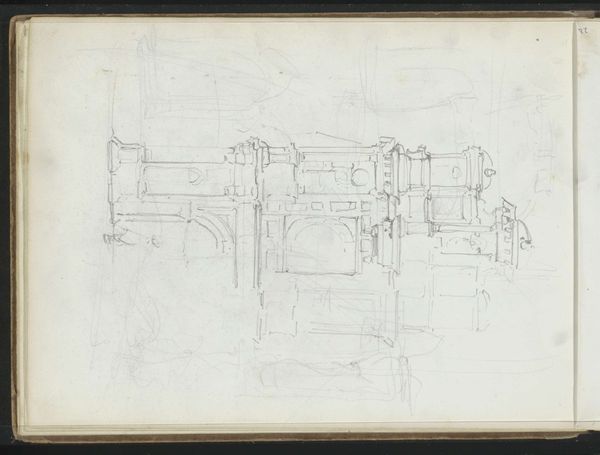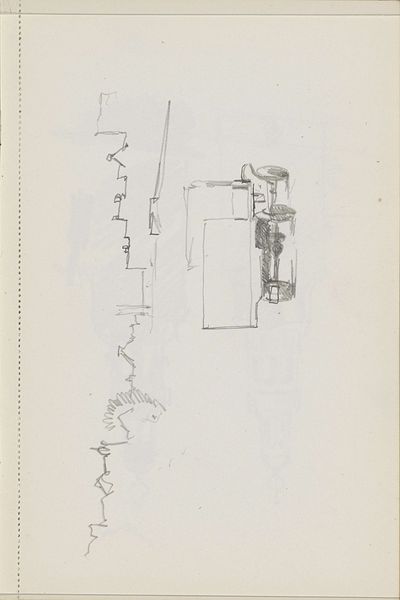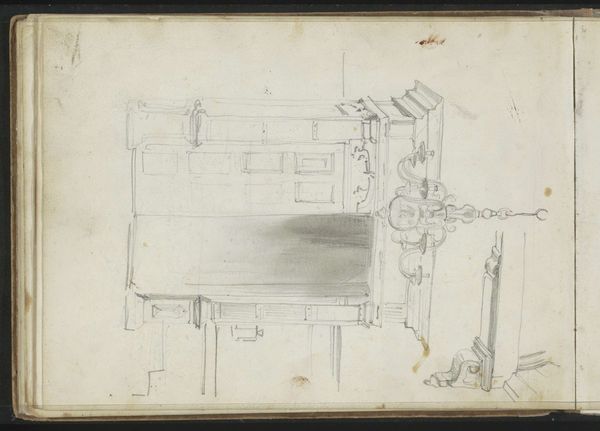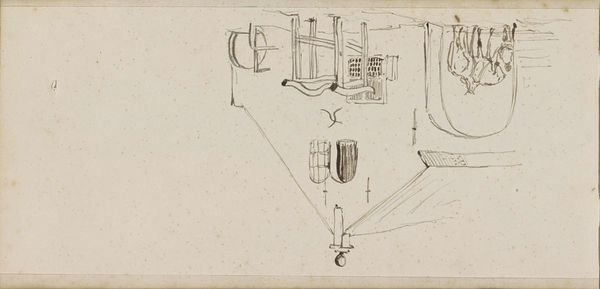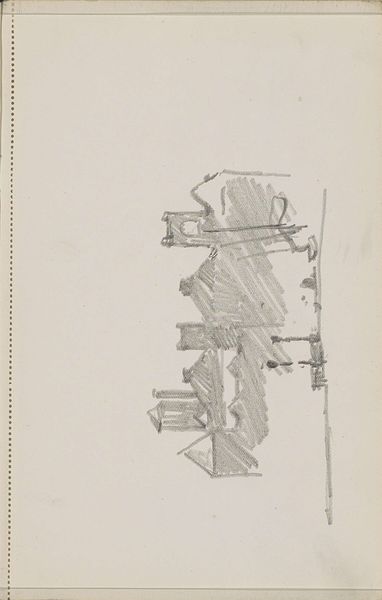
#
amateur sketch
#
aged paper
#
toned paper
#
light pencil work
#
sketched
#
incomplete sketchy
#
hand drawn type
#
personal sketchbook
#
sketchbook drawing
#
sketchbook art
Copyright: Rijks Museum: Open Domain
Curator: This intriguing sketch, simply titled "Topgevel," is attributed to Adrianus Eversen and believed to have been created sometime between 1828 and 1897. Editor: Immediately, I’m struck by its incompleteness. The sketchy lines on aged paper create an almost ethereal, dreamlike quality. The architectural details, though faint, suggest a top section, the upper facade of a building. Curator: Precisely. Consider the social context. During that period, urbanization was rapidly changing the landscape. Sketches like this allowed artists—and indeed, ordinary people—to document and engage with that transformation. How did urban planning shape public and private life? Was it about beauty, class segregation, about making the city appealing? Editor: I'm interested in what is present, and what isn't. Notice how Eversen uses the pencil to imply detail rather than render it precisely. The shading is minimal. Is this meant to convey realism, or evoke memory? The sketchy nature almost pushes it to the edge of abstraction, as a representation. Curator: It speaks to the accessibility of art at that time. Not just in its subject matter, but in the media itself. This probably comes from a personal sketchbook; that context is significant because it opens questions about who got to make art, about who had access to those sketchbooks, and whose stories and perspectives we see valued and validated. Editor: A valuable perspective. Considering the elements of art, I do wonder why he choose that particular composition. There’s something fragmented and elusive. The use of line, its sheer delicacy, creates the emotion. There is such sparseness to the overall image. Curator: In that sparseness, maybe, there’s also potential. A glimpse into a moment, an evolving cityscape and the questions it evoked, waiting for further exploration, reflection and perhaps, even activism. Editor: True, the work's simplicity encourages close and repeated viewings. Perhaps there's more than meets the eye and invites many further perspectives.
Comments
No comments
Be the first to comment and join the conversation on the ultimate creative platform.
